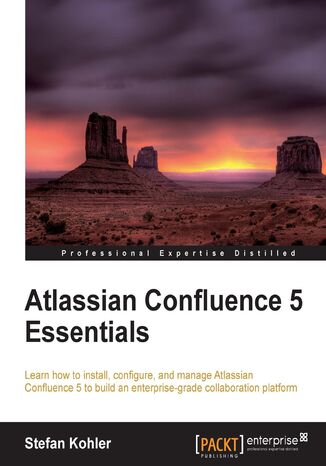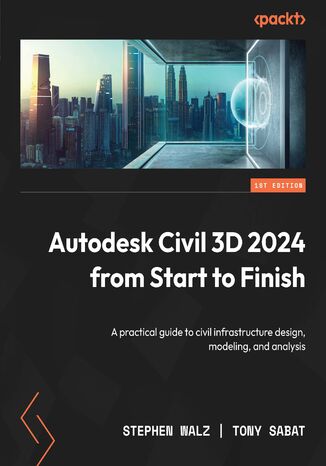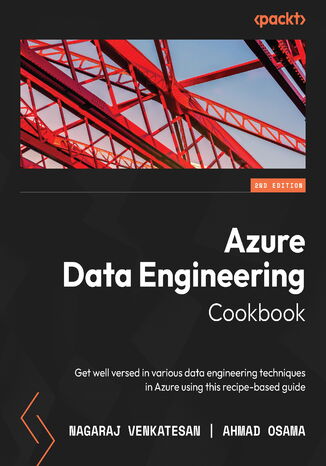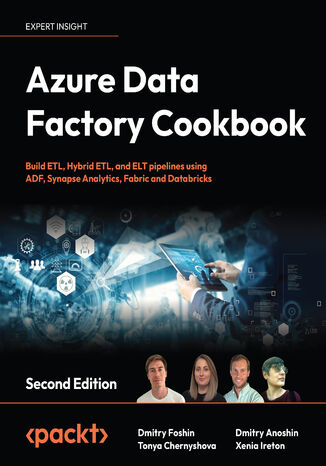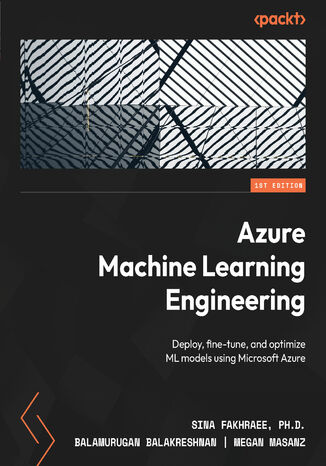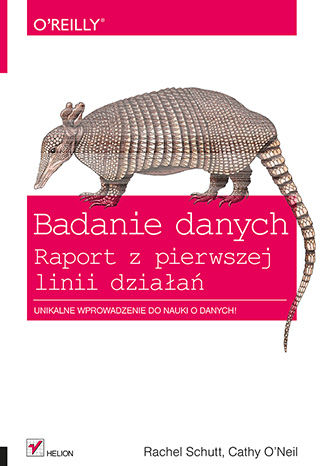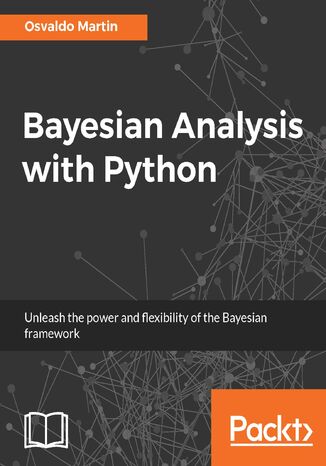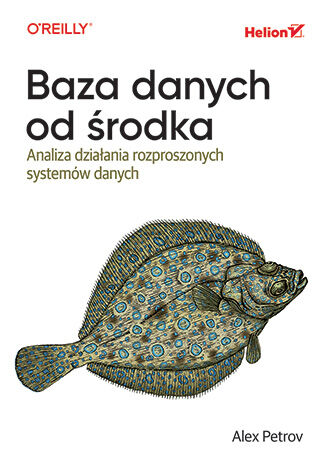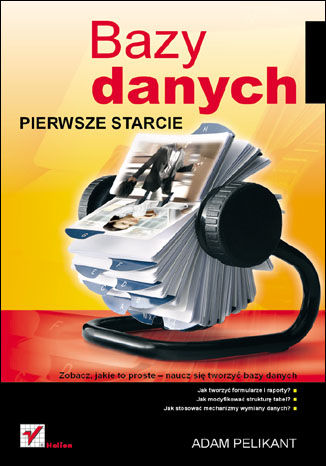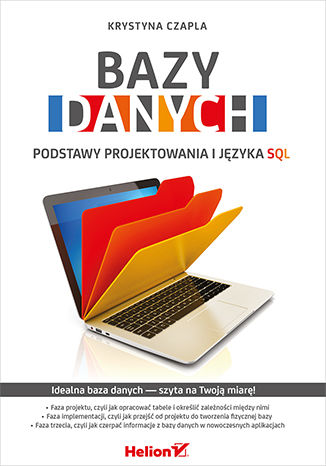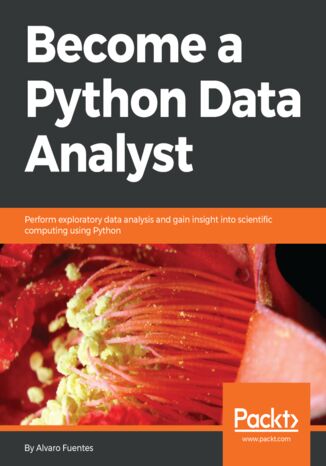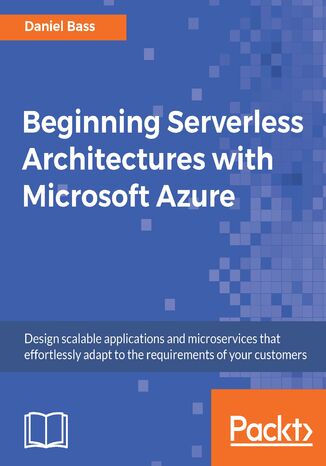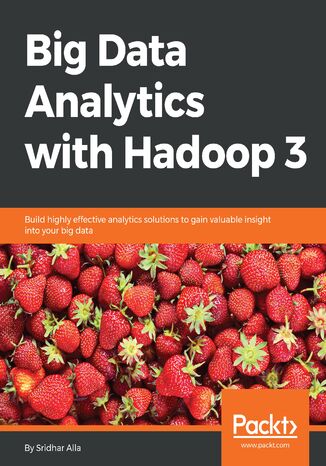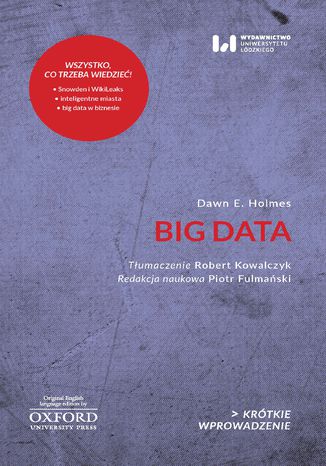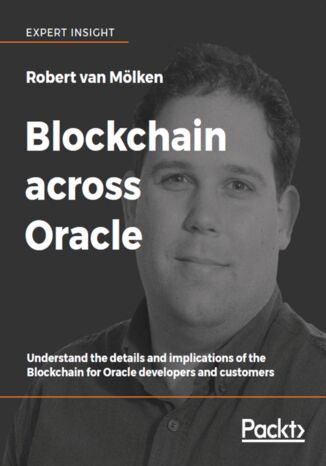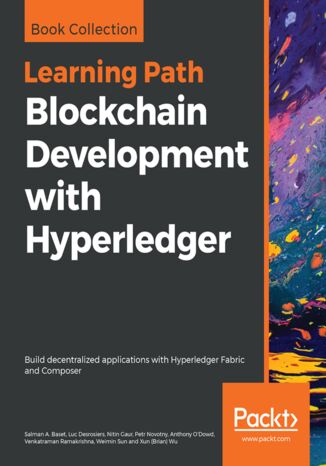Categories
Ebooks
-
Business and economy
- Bitcoin
- Businesswoman
- Coaching
- Controlling
- E-business
- Economy
- Finances
- Stocks and investments
- Personal competence
- Computer in the office
- Communication and negotiation
- Small company
- Marketing
- Motivation
- Multimedia trainings
- Real estate
- Persuasion and NLP
- Taxes
- Social policy
- Guides
- Presentations
- Leadership
- Public Relation
- Reports, analyses
- Secret
- Social Media
- Sales
- Start-up
- Your career
- Management
- Project management
- Human Resources
-
For children
-
For youth
-
Education
-
Encyclopedias, dictionaries
-
E-press
- Architektura i wnętrza
- Health and Safety
- Biznes i Ekonomia
- Home and garden
- E-business
- Ekonomia i finanse
- Esoterecism
- Finances
- Personal finance
- Business
- Photography
- Computer science
- HR & Payroll
- For women
- Computers, Excel
- Accounts
- Culture and literature
- Scientific and academic
- Environmental protection
- Opinion-forming
- Education
- Taxes
- Travelling
- Psychology
- Religion
- Agriculture
- Book and press market
- Transport and Spedition
- Healthand beauty
-
History
-
Computer science
- Office applications
- Data bases
- Bioinformatics
- IT business
- CAD/CAM
- Digital Lifestyle
- DTP
- Electronics
- Digital photography
- Computer graphics
- Games
- Hacking
- Hardware
- IT w ekonomii
- Scientific software package
- School textbooks
- Computer basics
- Programming
- Mobile programming
- Internet servers
- Computer networks
- Start-up
- Operational systems
- Artificial intelligence
- Technology for children
- Webmastering
-
Other
-
Foreign languages
-
Culture and art
-
School reading books
-
Literature
- Antology
- Ballade
- Biographies and autobiographies
- For adults
- Dramas
- Diaries, memoirs, letters
- Epic, epopee
- Essay
- Fantasy and science fiction
- Feuilletons
- Work of fiction
- Humour and satire
- Other
- Classical
- Crime fiction
- Non-fiction
- Fiction
- Mity i legendy
- Nobelists
- Novellas
- Moral
- Okultyzm i magia
- Short stories
- Memoirs
- Travelling
- Narrative poetry
- Poetry
- Politics
- Popular science
- Novel
- Historical novel
- Prose
- Adventure
- Journalism, publicism
- Reportage novels
- Romans i literatura obyczajowa
- Sensational
- Thriller, Horror
- Interviews and memoirs
-
Natural sciences
-
Social sciences
-
School textbooks
-
Popular science and academic
- Archeology
- Bibliotekoznawstwo
- Cinema studies
- Philology
- Polish philology
- Philosophy
- Finanse i bankowość
- Geography
- Economy
- Trade. World economy
- History and archeology
- History of art and architecture
- Cultural studies
- Linguistics
- Literary studies
- Logistics
- Maths
- Medicine
- Humanities
- Pedagogy
- Educational aids
- Popular science
- Other
- Psychology
- Sociology
- Theatre studies
- Theology
- Economic theories and teachings
- Transport i spedycja
- Physical education
- Zarządzanie i marketing
-
Guides
-
Game guides
-
Professional and specialist guides
-
Law
- Health and Safety
- History
- Road Code. Driving license
- Law studies
- Healthcare
- General. Compendium of knowledge
- Academic textbooks
- Other
- Construction and local law
- Civil law
- Financial law
- Economic law
- Economic and trade law
- Criminal law
- Criminal law. Criminal offenses. Criminology
- International law
- International law
- Health care law
- Educational law
- Tax law
- Labor and social security law
- Public, constitutional and administrative law
- Family and Guardianship Code
- agricultural law
- Social law, labour law
- European Union law
- Industry
- Agricultural and environmental
- Dictionaries and encyclopedia
- Public procurement
- Management
-
Tourist guides and travel
- Africa
- Albums
- Southern America
- North and Central America
- Australia, New Zealand, Oceania
- Austria
- Asia
- Balkans
- Middle East
- Bulgary
- China
- Croatia
- The Czech Republic
- Denmark
- Egipt
- Estonia
- Europe
- France
- Mountains
- Greece
- Spain
- Holand
- Iceland
- Lithuania
- Latvia
- Mapy, Plany miast, Atlasy
- Mini travel guides
- Germany
- Norway
- Active travelling
- Poland
- Portugal
- Other
- Przewodniki po hotelach i restauracjach
- Russia
- Romania
- Slovakia
- Slovenia
- Switzerland
- Sweden
- World
- Turkey
- Ukraine
- Hungary
- Great Britain
- Italy
-
Psychology
- Philosophy of life
- Kompetencje psychospołeczne
- Interpersonal communication
- Mindfulness
- General
- Persuasion and NLP
- Academic psychology
- Psychology of soul and mind
- Work psychology
- Relacje i związki
- Parenting and children psychology
- Problem solving
- Intellectual growth
- Secret
- Sexapeal
- Seduction
- Appearance and image
- Philosophy of life
-
Religion
-
Sport, fitness, diets
-
Technology and mechanics
Audiobooks
-
Business and economy
- Bitcoin
- Businesswoman
- Coaching
- Controlling
- E-business
- Economy
- Finances
- Stocks and investments
- Personal competence
- Communication and negotiation
- Small company
- Marketing
- Motivation
- Real estate
- Persuasion and NLP
- Taxes
- Social policy
- Guides
- Presentations
- Leadership
- Public Relation
- Secret
- Social Media
- Sales
- Start-up
- Your career
- Management
- Project management
- Human Resources
-
For children
-
For youth
-
Education
-
Encyclopedias, dictionaries
-
E-press
-
History
-
Computer science
-
Other
-
Foreign languages
-
Culture and art
-
School reading books
-
Literature
- Antology
- Ballade
- Biographies and autobiographies
- For adults
- Dramas
- Diaries, memoirs, letters
- Epic, epopee
- Essay
- Fantasy and science fiction
- Feuilletons
- Work of fiction
- Humour and satire
- Other
- Classical
- Crime fiction
- Non-fiction
- Fiction
- Mity i legendy
- Nobelists
- Novellas
- Moral
- Okultyzm i magia
- Short stories
- Memoirs
- Travelling
- Poetry
- Politics
- Popular science
- Novel
- Historical novel
- Prose
- Adventure
- Journalism, publicism
- Reportage novels
- Romans i literatura obyczajowa
- Sensational
- Thriller, Horror
- Interviews and memoirs
-
Natural sciences
-
Social sciences
-
Popular science and academic
-
Guides
-
Professional and specialist guides
-
Law
-
Tourist guides and travel
-
Psychology
- Philosophy of life
- Interpersonal communication
- Mindfulness
- General
- Persuasion and NLP
- Academic psychology
- Psychology of soul and mind
- Work psychology
- Relacje i związki
- Parenting and children psychology
- Problem solving
- Intellectual growth
- Secret
- Sexapeal
- Seduction
- Appearance and image
- Philosophy of life
-
Religion
-
Sport, fitness, diets
-
Technology and mechanics
Videocourses
-
Data bases
-
Big Data
-
Biznes, ekonomia i marketing
-
Cybersecurity
-
Data Science
-
DevOps
-
For children
-
Electronics
-
Graphics/Video/CAX
-
Games
-
Microsoft Office
-
Development tools
-
Programming
-
Personal growth
-
Computer networks
-
Operational systems
-
Software testing
-
Mobile devices
-
UX/UI
-
Web development
-
Management
Podcasts
- Ebooks
- Computer science
- Data bases
Data bases
Every idea, concept, and project needs documentation, which is traditionally kept in a variety of documents on different devices. Confluence 5 centralizes that documentation and provides it in one single location, available from almost any device and location.Atlassian Confluence 5 Essentials is a practical, hands-on guide explaining not only how to install and administrate Confluence, but also everything you need to create, share, and collaborate on your documentation. This book will give you everything you need to get started with Confluence.Before you can start creating content, Confluence needs to be available. That is exactly where we start with this book; installing Confluence. Through a number of clear, practical exercises you will go from installation and administration, to creating content and involving your teammates.This book will teach you how to quickly create compelling content. You will learn how to involve your teammates in the process, using the Confluence workbox and share features. You will learn how Confluence can be customized with regards to look and feel, extra functionality, and integration with other tools, so that there is nothing in your way when you want to introduce Confluence 5 within your organisation.If you need to develop better collaboration on mission critical projects, then this book is for you!
Civil infrastructure projects demand precision, collaboration, and the ability to adapt to design changes quickly. This book shows how Civil 3D 2024 can help you streamline workflows, reduce rework, and improve project accuracy—whether you're working solo or in a large engineering team.You'll learn how to set up your environment, manage survey data, and model surfaces, alignments, profiles, and utilities using Civil 3D’s comprehensive toolset. With a strong focus on real-world design practices, this book demonstrates how to use intelligent objects and dynamic documentation features to handle changes efficiently across distributed teams.You’ll also work with partner tools that enhance Civil 3D’s capabilities, ensuring you can manage data at scale, produce accurate documentation, and deliver designs that meet stakeholder expectations.Written by seasoned civil engineers and Autodesk-certified professionals, this book brings together best practices, project-specific workflows, and insights into maximizing productivity with Civil 3D and its companion tools.
Nagaraj Venkatesan, Ahmad Osama
The famous quote 'Data is the new oil' seems more true every day as the key to most organizations' long-term success lies in extracting insights from raw data. One of the major challenges organizations face in leveraging value out of data is building performant data engineering pipelines for data visualization, ingestion, storage, and processing. This second edition of the immensely successful book by Ahmad Osama brings to you several recent enhancements in Azure data engineering and shares approximately 80 useful recipes covering common scenarios in building data engineering pipelines in Microsoft Azure.You’ll explore recipes from Azure Synapse Analytics workspaces Gen 2 and get to grips with Synapse Spark pools, SQL Serverless pools, Synapse integration pipelines, and Synapse data flows. You’ll also understand Synapse SQL Pool optimization techniques in this second edition. Besides Synapse enhancements, you’ll discover helpful tips on managing Azure SQL Database and learn about security, high availability, and performance monitoring. Finally, the book takes you through overall data engineering pipeline management, focusing on monitoring using Log Analytics and tracking data lineage using Azure Purview.By the end of this book, you’ll be able to build superior data engineering pipelines along with having an invaluable go-to guide.
Dmitry Foshin, Tonya Chernyshova, Dmitry Anoshin, Xenia Ireton
This new edition of the Azure Data Factory book, fully updated to reflect ADS V2, will help you get up and running by showing you how to create and execute your first job in ADF. There are updated and new recipes throughout the book based on developments happening in Azure Synapse, Deployment with Azure DevOps, and Azure Purview. The current edition also runs you through Fabric Data Factory, Data Explorer, and some industry-grade best practices with specific chapters on each.You’ll learn how to branch and chain activities, create custom activities, and schedule pipelines, as well as discover the benefits of cloud data warehousing, Azure Synapse Analytics, and Azure Data Lake Gen2 Storage. With practical recipes, you’ll learn how to actively engage with analytical tools from Azure Data Services and leverage your on-premises infrastructure with cloud-native tools to get relevant business insights. You'll familiarize yourself with the common errors that you may encounter while working with ADF and find out the solutions to them. You’ll also understand error messages and resolve problems in connectors and data flows with the debugging capabilities of ADF.By the end of this book, you’ll be able to use ADF with its latest advancements as the main ETL and orchestration tool for your data warehouse projects.
Azure Machine Learning Engineering. Deploy, fine-tune, and optimize ML models using Microsoft Azure
Sina Fakhraee, Balamurugan Balakreshnan, Megan Masanz
Data scientists working on productionizing machine learning (ML) workloads face a breadth of challenges at every step owing to the countless factors involved in getting ML models deployed and running. This book offers solutions to common issues, detailed explanations of essential concepts, and step-by-step instructions to productionize ML workloads using the Azure Machine Learning service. You’ll see how data scientists and ML engineers working with Microsoft Azure can train and deploy ML models at scale by putting their knowledge to work with this practical guide.Throughout the book, you’ll learn how to train, register, and productionize ML models by making use of the power of the Azure Machine Learning service. You’ll get to grips with scoring models in real time and batch, explaining models to earn business trust, mitigating model bias, and developing solutions using an MLOps framework.By the end of this Azure Machine Learning book, you’ll be ready to build and deploy end-to-end ML solutions into a production system using the Azure Machine Learning service for real-time scenarios.
Badanie danych. Raport z pierwszej linii działań
Unikalne wprowadzenie do nauki o danych! W dzisiejszych czasach najcenniejszym dobrem jest informacja. Ogromne ilości danych są przechowywane w przepastnych bazach danych, a kluczem do sukcesu jest ich umiejętna analiza i wyciąganie wniosków. To dynamicznie rozwijająca się dziedzina wiedzy, w której do tej pory brakowało solidnych podręczników, pozwalających na dogłębne poznanie tego obszaru. Na szczęście to się zmieniło! To unikalna książka, w której badacze z największych firm branży IT dzielą się skutecznymi technikami analizy danych. Z kolejnych rozdziałów dowiesz się, czym jest nauka o danych, model danych oraz test A/B. Ponadto zdobędziesz wiedzę na temat wnioskowania statystycznego, algorytmów, języka R oraz wizualizacji danych. Sięgnij po tę książkę, jeżeli chcesz się dowiedzieć, jak wykrywać oszustwa, korzystać z MapReduce oraz badać przyczynowość. To obowiązkowa pozycja na półce czytelników zainteresowanych badaniem danych. Wśród tematów poruszonych w książce odnajdziesz: Wnioskowanie statystyczne, eksploracyjną analizę danych i proces (metodologię) nauki o danych Algorytmy Filtry spamu, naiwny algorytm Bayesa i wstępną obróbkę danych Regresję logistyczną Modelowanie finansowe Mechanizmy rekomendacji i przyczynowość Wizualizowanie danych Sieci społecznościowe i dziennikarstwo danych Inżynierię danych, systemy MapReduce, Pregel i Hadoop Wyciągnij wartościowe wnioski z posiadanych informacji!
Bayesian Analysis with Python. Click here to enter text
The purpose of this book is to teach the main concepts of Bayesian data analysis. We will learn how to effectively use PyMC3, a Python library for probabilistic programming, to perform Bayesian parameter estimation, to check models and validate them. This book begins presenting the key concepts of the Bayesian framework and the main advantages of this approach from a practical point of view. Moving on, we will explore the power and flexibility of generalized linear models and how to adapt them to a wide array of problems, including regression and classification. We will also look into mixture models and clustering data, and we will finish with advanced topics like non-parametrics models and Gaussian processes. With the help of Python and PyMC3 you will learn to implement, check and expand Bayesian models to solve data analysis problems.
Baza danych od środka. Analiza działania rozproszonych systemów danych
W ciągu ostatnich 15 lat powstało tak wiele baz danych i narzędzi, że łatwo się pogubić, jeśli próbuje się zrozumieć przypadki użycia, szczegóły i specyfiki. Większość opracowań na temat systemów baz danych nie opisuje implementacji mechanizmu pamięci masowej. Tymczasem znajomość tych wewnętrznych aspektów jest bardzo ważna dla programistów, inżynierów, architektów i menedżerów. Aby wybrać odpowiednie narzędzie do pracy, musisz zrozumieć idee i algorytmy stojące za ich projektem. Michael Klishin, współpracownik RabbitMQ Ta książka ułatwi Ci zgłębienie koncepcji kryjących się za działaniem nowoczesnych baz danych. Dzięki niej zrozumiesz, w jaki sposób struktury dyskowe różnią się od tych w pamięci i jak działają algorytmy efektywnego utrzymywania struktur B drzewa na dysku. Poznasz implementacje pamięci masowej o strukturze dziennika. Znajdziesz tu również wyjaśnienie zasad organizacji węzłów w klaster baz danych i specyfiki środowisk rozproszonych. Dowiesz się, jak algorytmy rozproszone poprawiają wydajność i stabilność systemu i jak uzyskać ostateczną spójność danych. Ponadto w książce zaprezentowano koncepcje antyentropii i plotek, służące do zapewniania zbieżności i rozpowszechniania danych, a także mechanizm transakcji utrzymujący spójność logiczną bazy. Najważniejsze zagadnienia: klasyfikacja i taksonomia pamięci masowej silniki pamięci masowej oparte na B-drzewie i niezmienna struktura dziennika struktura plików bazy danych pamięć podręczna stron i pule buforów systemy rozproszone: złożone wzorce komunikacji węzłów i procesów klastry baz danych Obowiązkowa lektura dla każdego, kto korzysta z jakiejkolwiek bazy danych! Nate McCall, przewodniczący PMC
Zobacz, jakie to proste -- naucz się tworzyć bazy danych! Jak tworzyć formularze i raporty? Jak modyfikować strukturę tabel? Jak stosować mechanizmy wymiany danych? Współczesny świat wymusza na przedsiębiorstwach gromadzenie oraz przetwarzanie ogromnej ilości informacji. To sprawia, że muszą one dysponować wydajnymi i sprawnymi bazami danych. Aby zbudować taki system zarządzania danymi, niezbędne są odpowiednie narzędzia -- jednym z nich jest program MS Access. Ta aplikacja przede wszystkim pozwala na łatwą kontrolę poprawności tworzonych projektów oraz zapewnia integrację narzędzi służących do tworzenia struktury relacyjnej. Dba także o zgodność tych narzędzi ze standardem języka zapytań SQL, wykorzystywanym do tworzenia i modyfikowania baz danych oraz operowania na zgromadzonych w nich informacjach. Książka "Bazy danych. Pierwsze starcie" stanowi doskonałe wprowadzenie w tematykę tworzenia baz danych. Zawiera wszystkie potrzebne informacje, podane w prosty i przejrzysty sposób. Ten podręcznik przyda się zarówno studentom kierunków informatycznych, jak i wszystkim tym, którzy chcą zdobyć wiedzę o nowoczesnych metodach budowania takich baz. Stąd dowiesz się m.in., jak wykorzystywać język zapytań SQL, w jaki sposób tworzyć tabele, formularze i raporty oraz stosować mechanizmy wymiany danych, a także na czym polega filtrowanie i sortowanie w zapytaniach. Zdobędziesz wiedzę i umiejętności wystarczające do samodzielnego zbudowania wydajnej bazy danych i sprawnego nią zarządzania. Projektowanie bazy danych -- narzędzia wizualne Tworzenie formularzy i raportów Strukturalny język zapytań SQL w wersji MS JetSQL Składnia podstawowa Unia -- koniunkcja zbiorów Grupowanie i funkcje agregujące Zastosowanie języka SQL z poziomu formularzy Mechanizmy wymiany danych Obiekty: DAO, RDO, ADO Zastosowanie mechanizmów wymiany danych przy tworzeniu aplikacji Stwórz własną, niezawodną bazę danych!
Bazy danych. Podstawy projektowania i języka SQL
Idealna baza danych — szyta na Twoją miarę! Faza projektu, czyli jak opracować tabele i określić zależności między nimi Faza implementacji, czyli jak przejść od projektu do tworzenia fizycznej bazy Faza trzecia, czyli jak czerpać informacje z bazy danych w nowoczesnych aplikacjach Bazy danych są dziś tworzone na potęgę i wykorzystywane niemal na każdym kroku. Od czasu pojawienia się komputerów osobistych, internetu i potężnych serwerów ilość danych wymagających zapisania i przetworzenia wciąż wzrasta, a ich sensowne posegregowanie, zapewnienie integralności, łatwości przeszukiwania i możliwości analizowania to umiejętność na wagę złota. Jeśli chcesz ją zdobyć lub udoskonalić, ta książka na pewno Ci w tym pomoże. Znajdziesz tu klarowne, jasne informacje dotyczące kolejnych etapów projektowania oraz implementacji bazy danych, z podziałem na dwie odrębne metody — modelowanie i normalizację. Poznasz obszerne podstawy języka SQL — pojęcia, typy danych, składnię i całe zestawy poleceń — i na konkretnych przykładach zobaczysz, jak używać tego języka. Zrozumiesz też, do czego służy język zapytań i co można zrobić przy użyciu języka DML. To pozwoli Ci z łatwością wykonać ćwiczenia utrwalające, a gdy skończysz będziesz gotowy zmierzyć się z budową własnej bazy! Modelowanie logiczne Normalizacja danych Język baz danych SQL Język zapytań DQL — polecenie SELECT Język manipulowania danymi — DML Język definiowania danych — DDL Proces logowania do bazy Twoje dane w dobrej bazie to klucz do sukcesu!
Python is one of the most common and popular languages preferred by leading data analysts and statisticians for working with massive datasets and complex data visualizations.Become a Python Data Analyst introduces Python’s most essential tools and libraries necessary to work with the data analysis process, right from preparing data to performing simple statistical analyses and creating meaningful data visualizations.In this book, we will cover Python libraries such as NumPy, pandas, matplotlib, seaborn, SciPy, and scikit-learn, and apply them in practical data analysis and statistics examples. As you make your way through the chapters, you will learn to efficiently use the Jupyter Notebook to operate and manipulate data using NumPy and the pandas library. In the concluding chapters, you will gain experience in building simple predictive models and carrying out statistical computation and analysis using rich Python tools and proven data analysis techniques.By the end of this book, you will have hands-on experience performing data analysis with Python.
Many businesses are rapidly adopting a microservices-first approach to development, driven by the availability of new commercial services like Azure Functions and AWS Lambda. In this book, we’ll show you how to quickly get up and running with your own serverless development on Microsoft Azure. We start by working through a single function, and work towards integration with other Azure services like App Insights and Cosmos DB to handle common user requirements like analytics and highly performant distributed storage. We finish up by providing you with the context you need to get started on a larger project of your own choosing, leaving you equipped with everything you need to migrate to a cloud-first serverless solution.
Apache Hadoop is the most popular platform for big data processing, and can be combined with a host of other big data tools to build powerful analytics solutions. Big Data Analytics with Hadoop 3 shows you how to do just that, by providing insights into the software as well as its benefits with the help of practical examples.Once you have taken a tour of Hadoop 3’s latest features, you will get an overview of HDFS, MapReduce, and YARN, and how they enable faster, more efficient big data processing. You will then move on to learning how to integrate Hadoop with the open source tools, such as Python and R, to analyze and visualize data and perform statistical computing on big data. As you get acquainted with all this, you will explore how to use Hadoop 3 with Apache Spark and Apache Flink for real-time data analytics and stream processing. In addition to this, you will understand how to use Hadoop to build analytics solutions on the cloud and an end-to-end pipeline to perform big data analysis using practical use cases.By the end of this book, you will be well-versed with the analytical capabilities of the Hadoop ecosystem. You will be able to build powerful solutions to perform big data analytics and get insight effortlessly.
Big Data. Krótkie Wprowadzenie 30
KRÓTKIE WPROWADZENIE - książki, które zmieniają sposób myślenia! Big data pokazuje, jak postęp technologiczny spowodowany rozwojem Internetu i cyfrowego wszechświata wpłynął na radykalną transformację nauki o danych. Czym są duże zbiory danych i jak zmieniają świat? Jaki mają wpływ na nasze codzienne życie, a jaki na świat biznesu? W tej książce czytelnik znajdzie odpowiedzi na te pytania. * Interdyscyplinarna seria KRÓTKIE WPROWADZENIE piórem uznanych ekspertów skupionych wokół Uniwersytetu Oksfordzkiego przybliża aktualną wiedzę na temat współczesnego świata i pomaga go zrozumieć. W atrakcyjny sposób prezentuje najważniejsze zagadnienia XXI w. - od kultury, religii, historii przez nauki przyrodnicze po technikę. To publikacje popularnonaukowe, które w formule przystępnej, dalekiej od akademickiego wykładu, prezentują wybrane kwestie. Książki idealne zarówno jako wprowadzenie do nowych tematów, jak i uzupełnienie wiedzy o tym, co nas pasjonuje. Najnowsze fakty, analizy ekspertów, błyskotliwe interpretacje. Opiekę merytoryczną nad polską edycją serii sprawują naukowcy z Uniwersytetu Łódzkiego: prof. Krystyna Kujawińska Courtney, prof. Ewa Gajewska, prof. Aneta Pawłowska, prof. Jerzy Gajdka, prof. Piotr Stalmaszczyk.
Blockchain across Oracle gives you the professional orientation to Blockchain that you need as an Oracle developer in today’s changing world. Written and prepared for you by Oracle Developer Champion Robert van Mölken, this book gets you up to speed with the details of the Blockchain - core concepts, how to implement Oracle’s Blockchain Cloud Service, industry implications for the Blockchain, and how the Blockchain will affect your Oracle customers.Robert van Mölken introduces you to the history and concepts of the Blockchain. You’ll really get to understand the Blockchain inside and out, as an Oracle developer or solution architect. You’ll understand the Blockchain flow, and how the hashes and chains create a new decentralised paradigm for you as an Oracle developer. You’ll gain insights into how the Blockchain affects Oracle developers and customers in this modern and disruptive era. You’ll see how the Blockchain concepts work in this new world where Assets, Transactions, Security, and Privacy, can all be sustained across a decentralized system for your customers.Then you'll find a detailed look at the cutting-edge Oracle middleware solutions. You’ll learn about Hyperledger Fabric, the opensource Blockchain framework used by Oracle as its core, and how to set up your own Oracle Blockchain Network. You’ll design and develop a smart contract, and learn how to run it on the Oracle Blockchain Cloud Service.The final part of the book looks at how the Blockchain will affect your customers across various industry sectors. By studying industry trends in the financial services sector, healthcare industry, and the transport industry, you’ll discover how the options and possibilities for you and your clients are being transformed by the Blockchain across Oracle. You’ll complete this professional orientation by looking at Blockchain trends and future directions.
Salman A. Baset, Luc Desrosiers, Nitin Gaur, Petr Novotny, ...
Blockchain and Hyperledger are open source technologies that power the development of decentralized applications. This Learning Path is your helpful reference for exploring and building blockchain networks using Ethereum, Hyperledger Fabric, and Hyperledger Composer.Blockchain Development with Hyperledger will start off by giving you an overview of blockchain and demonstrating how you can set up an Ethereum development environment for developing, packaging, building, and testing campaign-decentralized applications. You'll then explore the de facto language Solidity, which you can use to develop decentralized applications in Ethereum. Following this, you'll be able to configure Hyperledger Fabric and use it to build private blockchain networks and applications that connect to them. Toward the later chapters, you'll learn how to design and launch a network, and even implement smart contracts in chain code. By the end of this Learning Path, you'll be able to build and deploy your own decentralized applications by addressing the key pain points encountered in the blockchain life cycle.This Learning Path includes content from the following Packt products:• Blockchain Quick Start Guide by Xun (Brian) Wu and Weimin Sun• Hands-On Blockchain with Hyperledger by Nitin Gaur et al.

